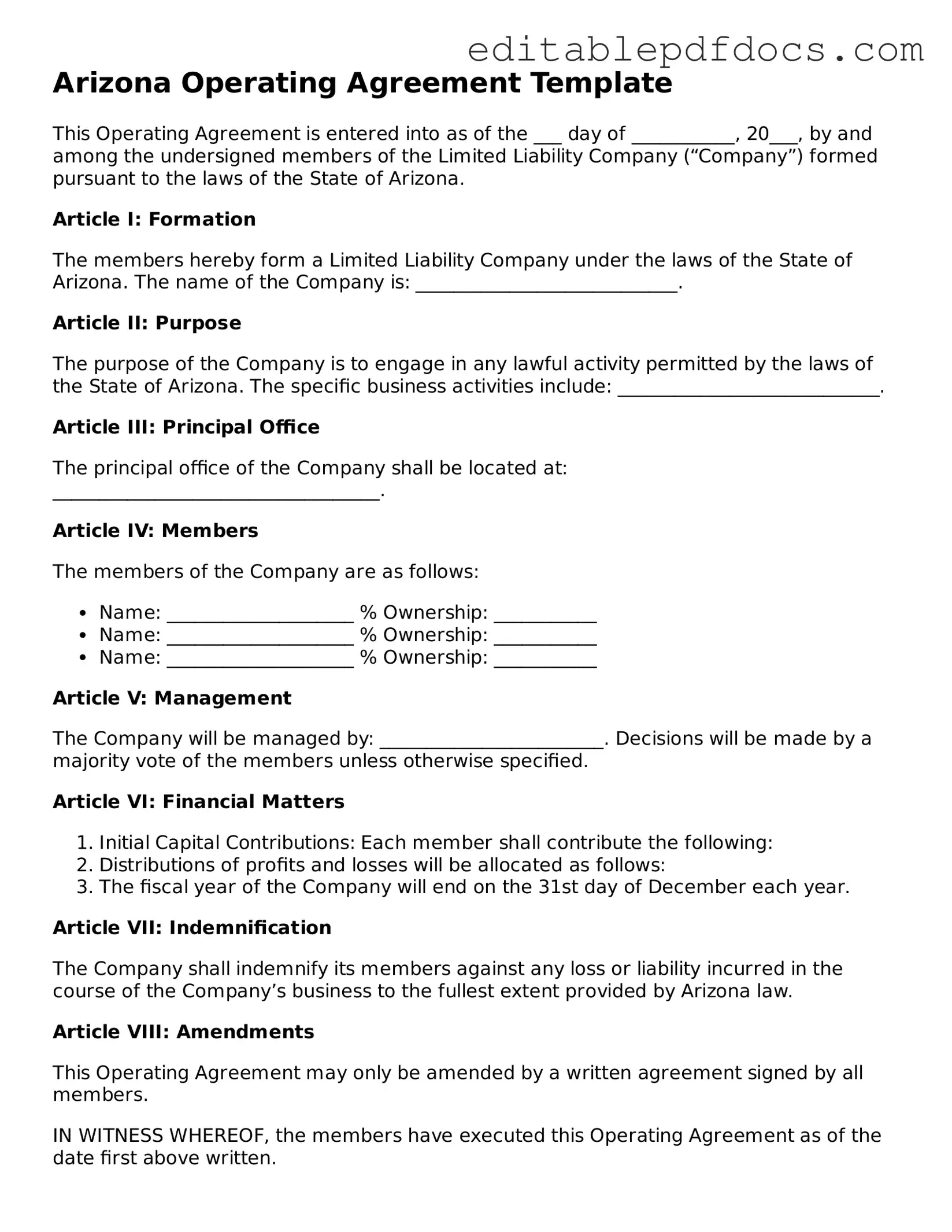Operating Agreement Document for Arizona
The Arizona Operating Agreement form is a legal document that outlines the management structure and operational procedures for a limited liability company (LLC) in Arizona. This agreement serves to protect the interests of the members and clarify the rights and responsibilities of each party involved. To ensure compliance and proper governance, it is essential to fill out the form accurately.
Click the button below to complete the Arizona Operating Agreement form.
Open Editor Now
